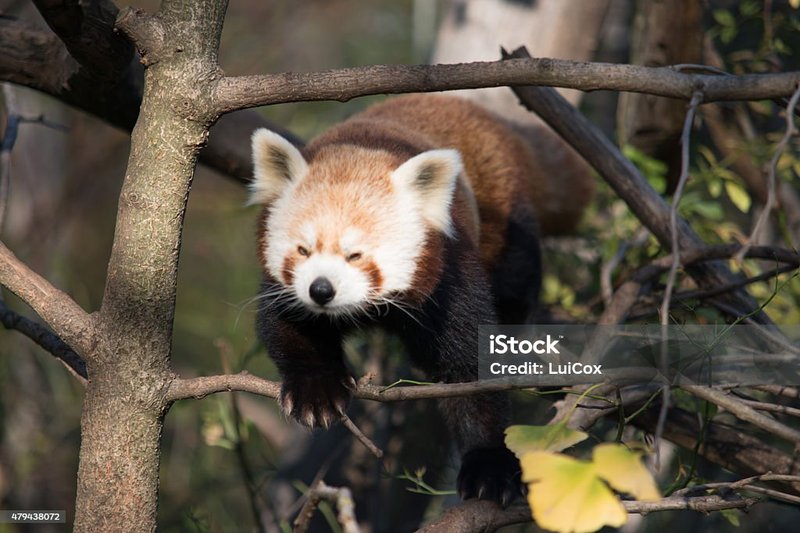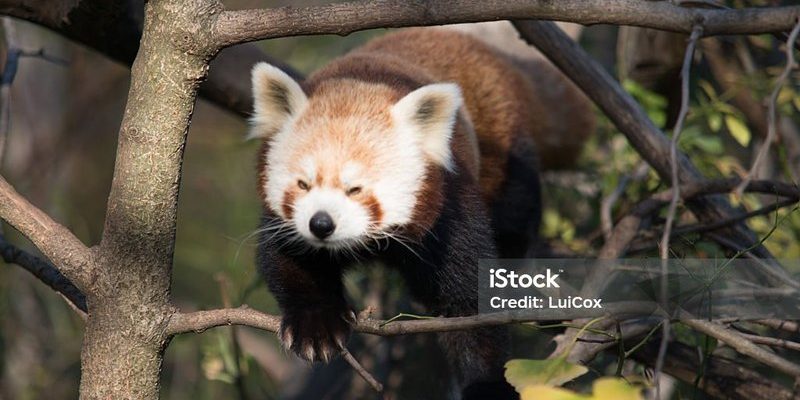
These charming critters are not just about aesthetics; they have a fascinating lifestyle that revolves around their food choices. Found primarily in the forests of the Himalayas and southwestern China, red pandas face challenges in finding adequate nutrition, given their specific needs. Just like we might look for a café that serves our favorite dishes, red pandas are on the hunt for the best bamboo. Here’s how they manage it!
Understanding the Red Panda’s Diet
Red pandas are primarily herbivores, and their diet is heavily centered around bamboo. Imagine if your favorite restaurant only served one specific dish, but you still loved it to bits—that’s like a red panda and its bamboo. They consume various species of bamboo, including Fargesia and Phyllostachys, which make up about 95% of their diet.
However, it’s not all about bamboo. Although they are often described as “bamboo eaters,” red pandas are opportunistic feeders. They also enjoy fruits, berries, acorns, and even small insects or rodents when the opportunity arises. Foods like these add some variety to their meals and ensure they get the necessary nutrients. Think of it as them indulging in “snacks” to complement their main course of bamboo.
One interesting thing about red pandas is their digestion process. Since bamboo is low in nutrition, red pandas have to eat a lot—up to 20,000 leaves a day! This is similar to how some people might need to eat five small meals instead of three large ones to feel satisfied. Their specialized stomachs help them extract what little nutrients they can from their fibrous diet.
Hunting vs. Foraging: What’s the Difference?
You might be wondering how red pandas find their food. The term “hunting” doesn’t quite capture their eating style, as they don’t actively pursue prey in the same way carnivores do. Instead, red pandas are masters of foraging. Here’s the thing: foraging means searching for food without the high-energy chase that’s often associated with hunting.
In the wild, foraging requires patience and skill. Red pandas use their keen sense of smell and excellent climbing abilities to locate bamboo groves. They often navigate their arboreal environments, skillfully moving from tree to tree in search of the freshest bamboo shoots. This climbing prowess not only protects them from potential predators but also helps them reach the best food sources.
The way they forage also reflects their lifestyle. By only needing to consume bamboo rather than chasing after fast-moving animals, red pandas conserve energy. This energy-saving strategy is crucial in their cold mountainous habitats, where food can be scarce. It’s like choosing to make a quick salad instead of cooking a three-course meal—you get what you need without exhausting yourself.
Seasonal Changes and Their Impact on Diet
Just like we might switch up our meals with the seasons, red pandas also alter their diets throughout the year. In spring and summer, when fresh bamboo shoots are abundant, they fill up on this new growth, which is soft and tender. As the weather turns chilly in autumn and winter, the bamboo becomes tougher, forcing red pandas to adapt their foraging strategies.
During the harsher months, red pandas might rely more on the hardier parts of the bamboo plant, such as the stems and leaves, which aren’t as nutritious but still provide sustenance. This seasonal shift can take a toll on their energy levels, making finding food even more critical. Imagine how challenging it would be if your favorite meal was out of season—balancing nutrition becomes a delicate game.
Moreover, the ripe fruits and berries that appear in late summer and early fall provide an added boost to their diet. This diversity is essential; it’s like spicing up your meal plan to ensure you don’t get bored of eating the same thing daily. While bamboo remains their mainstay, these seasonal changes highlight the red panda’s adaptability.
Adaptations for Feeding
Red pandas have several unique adaptations that help them maximize their bamboo diet. One of the most notable features is their pseudo-thumb—a modified wrist bone that acts like an opposable thumb. This helps them grasp and manipulate bamboo, making it easier to pick apart the shoots they want.
Their sharp claws also play a critical role. They’re not just for climbing; these claws help red pandas tear through tough bamboo. It’s like having the right tool for the job. Just picture a chef using a special knife to slice through tough vegetables—red pandas have their own adaptations to make feeding as efficient as possible.
Additionally, their digestive system has evolved to process their fibrous diet. While they don’t get a lot of calories from bamboo, red pandas are designed to handle the low-nutrient food efficiently. They have a longer intestinal tract, allowing for better nutrient absorption. This is similar to how we might choose to eat high-fiber foods to feel fuller longer.
Threats to Their Food Sources
Despite their adaptations, red pandas face several threats that make food finding challenging. Habitat loss is one of the biggest issues. As forests get chopped down for agriculture or urban development, red pandas have fewer places to find their beloved bamboo. It’s like trying to eat your favorite meal in a restaurant that’s slowly shrinking in size—options become limited.
Climate change also impacts bamboo growth, affecting what red pandas can eat. Changes in temperatures and rainfall can lead to reduced bamboo availability, forcing these animals to search farther for food. Imagine if your grocery store suddenly stopped carrying your go-to snacks; it would be frustrating, right?
Moreover, pollution and human encroachment can lead to food shortages. Red pandas are often forced into smaller, fragmented areas, making it even more challenging to find enough bamboo. Conservation efforts are vital in protecting their habitats and ensuring a stable food supply. We can think of these efforts as a community rallying together to maintain a beloved restaurant that serves everyone’s favorite meals.
The diet and hunting strategies of red pandas offer a glimpse into their unique world and how they survive in a challenging environment. These charming creatures have adapted in remarkable ways to thrive on a bamboo-centric diet, with their foraging skills, seasonal dietary changes, and special adaptations playing critical roles in their survival.
Understanding the delicate balance between red pandas and their food sources reminds us of the importance of conservation efforts. Just like we wouldn’t want our favorite dishes to disappear, we need to protect these adorable animals and their habitats. Supporting conservation can ensure that future generations will continue to enjoy stories about red pandas and their fascinating lifestyles. So, the next time you see a picture of a red panda, you’ll appreciate not just its cuteness but also the incredible journey it undertakes to find its meals each day.

